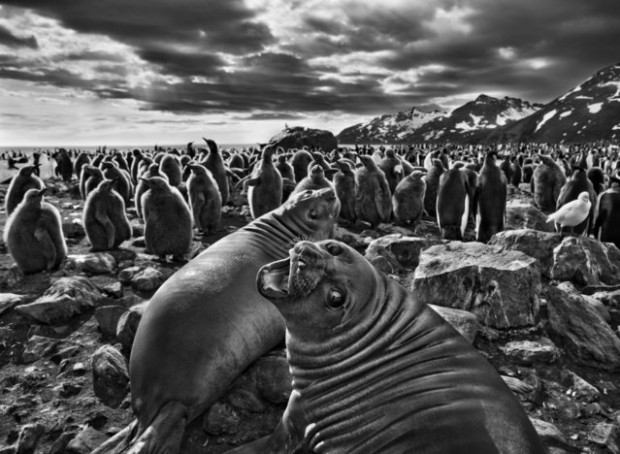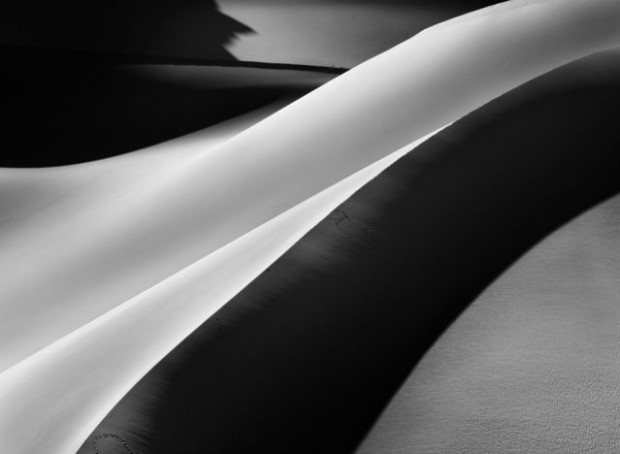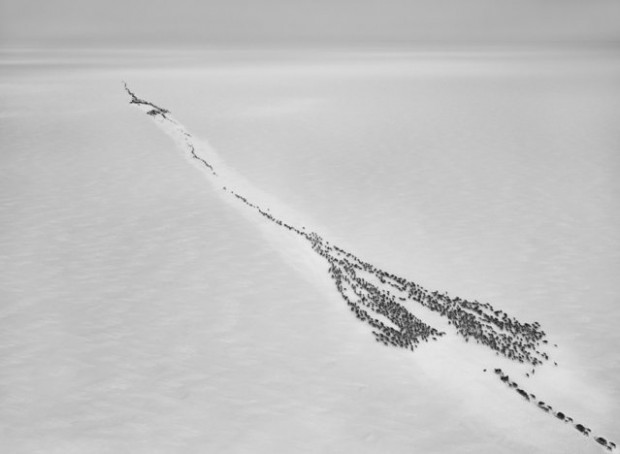Genesis by Sebastião Salgado
Sebastião Salgado is a Brazilian documentary photographer living in Paris. He has produced several books, and his work has been exhibited extensively around the world. His latest work, «Genesis», premieres at The Natural History Museum in London on April 11, on view through September 8, 2013.


On South Georgia, a barren island in the far South Atlantic, a pair of southern elephant seal calves beckon before a colony of king penguins. “The male seals can grow to almost five tons,” says Salgado, “but these are just babies. This one looked at me with beautiful eyes”.


On one of several trips to the Sahara, Salgado encountered this slashing sand dune in southern Algeria.


In Siberia Salgado traveled with the Nenets, nomadic herders who move their reindeer every year more than 620 miles from winter pastures on the Russian mainland to summer grazing lands in the Arctic Circle. “Every five days they kill one reindeer,” says Salgado. “In order not to lose its blood they don’t cut its neck — they strangle it. We drank the hot blood inside the animal. Then they take off the skin because they need it as cover for their huts, for clothes and to make the lassos they use to catch reindeer.” Here the herd makes the 31-mile crossing of the frozen Ob River in Siberia while a caravan of sledges follows in their wake
Caimans, lizards related to alligators, gather in the Pantanal, a vast wetland in western Brazil that spills into Paraguay and Bolivia. Though an estimated 10 million live there, they are considered an endangered species because of uncontrolled hunting.
Big Horn Creek in Kluane National Park and Reserve, located in a nearly inaccessible region of Canada’s Yukon Territory, near the border with Alaska.
Two black-browed albatrosses nestle while overlooking the Willis Islands near South Georgia, in the far South Atlantic.
A herd of hippopotamus wade in the Okavongo Delta in Botswana. Though Salgado preferred balloons over planes, they could be risky. “In the late afternoon you get ascendant currents of air that can be dangerous,” he says. “So we would start to fly at half past five in the morning and land at half past ten”.
A colony of chinstrap penguins mills about at the foot of Mount Michael, an active volcano in the South Sandwich Islands, in the far South Atlantic, where erosion has cut the volcanic ash into eerie crevices. “These landscapes are as alive as I am,” says Salgado. “One day I was walking around rocks near a volcano that were one day old. They had just become solid”.
Sea lions rest on shelves of compacted volcanic ash on Santiago Island, part of the Galapagos chain made famous by Charles Darwin.
The earth’s largest concentration of penguins inhabits tiny Zavodovski Island, one of the nine volcanic islands in the South Sandwich chain, in the far South Atlantic. A 1997 survey estimated that it’s home to about 750,000 chinstrap penguin couples as well as a large colony of macaroni penguins. The island’s active volcano is visible in the background
Chinstrap penguins line up along an iceberg as it floats among the South Sandwich Islands in the far South Atlantic.
Photos by Sebastião Salgado/Amazonas/Contact Press Images